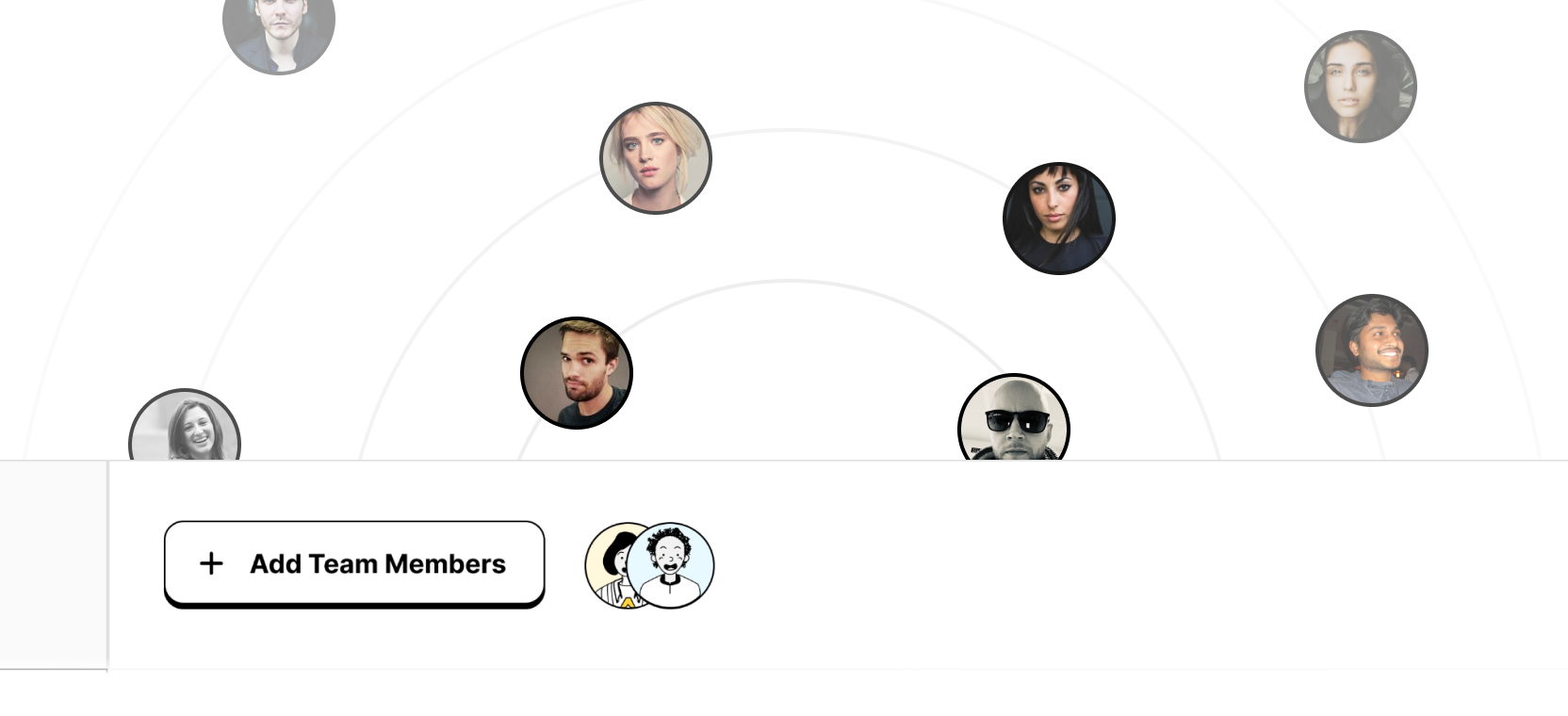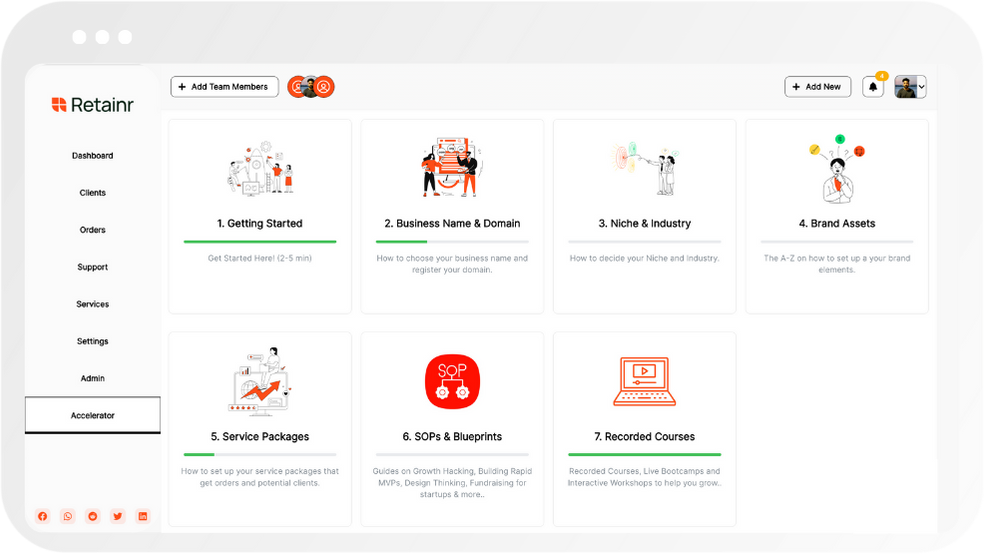
7 Top Tips for Creating a Content Calendar
Build with Retainr
Sell your products and services, manage clients, orders, payments, automate your client onboarding and management with your own branded web application.
Get Started1. What is a content calendar and why is it important?
What is a Content Calendar?
A content calendar, also known as an editorial calendar, is a crucial tool for all digital marketers, bloggers, and content creators. It presents a visual workflow that organizes your upcoming content, including blog posts, social media updates, e-books, podcasts, and more. The calendar is typically represented in a format that aligns your content with days, weeks, or months.
The Importance of a Content Calendar
The importance of a content calendar lies in how it contributes to overall content strategy, timing, and organization. It offers several benefits -
- Planning and Coordination: It allows teams to visualize their marketing strategy over time, facilitating better coordination and planning.
- Consistent Posting: With a schedule in place, there are fewer chances of forgetting to post content regularly.
- Efficiency: It reduces stress by letting you plan and work ahead of time, thereby increasing productivity and efficiency.
- Quality Control: Planning ahead allows more time for content creation and revision, ensuring high-quality content.
Visualizing a Content Calendar
Here’s an example of a table representation of a basic content calendar for a week for a blog and social media platforms:
Stage in Marketing FunnelType of ContentAwarene
2. Can you provide the seven most important tips for creating a successful content calendar?
Understand your Audience
Creating a successful content calendar begins with understanding your audience. This is crucial because the content should be catered towards the interests, needs, and behaviours of your audience. Firstly, identify your target demographic. Next, determine what type of content they would find most compelling. Lastly, find out when they are most likely to be online, which will help decide the timing of your content.
Plan in Advance
Planning your content in advance ensures consistency and high quality. It also helps manage resources effectively. Follow these steps:
- Document all relevant holidays, events, and dates related to your business or industry.
- Use this information to brainstorm blog post ideas, social media updates, email marketing content, etc.
- Lastly, organize all your content ideas in sequence of their publishing dates.
Use a Content Calendar Tool
A content calendar tool greatly simplifies this process. Here is a simple table format you could use:
This table format ensures you have a visual overview of your content schedule. You can immediately see what content is due when, and what the status is. You can edit and update this table as required.
3. How can a content calendar improve my content strategy?
Improving Your Content Strategy with a Content Calendar
A content calendar is not just a scheduling tool, it's a strategic asset that can significantly elevate your content strategy. It offers substantial benefits to content marketers, bloggers or any digital business owner. Here’s how:
- Efficiency & Organization: A content calendar streamlines your content creation processes. It helps you organize your content, plan what needs to be created or revised, and when it should be published.
- Synchronization: It ensures all your content efforts are synchronized. You can align your content with relevant business events, product releases, or seasonal trends.
- Consistency: It maintains consistency in your content's quality, messaging, and posting frequency — a key factor for audience retention.
These are some of the strategic improvements a content calendar brings to your content strategy. But how might this look in a practical sense? Let's visualize it in a hypothetical monthly content calendar table:
This table illustrates how a content calendar can help you strategize and plan your content production, ensuring that you’re not just creating content haphazardly, but with purpose and direction. In a world where content is king, a content calendar helps you strategize like a chess master, always thinking two moves ahead.
4. Could you provide examples of effective content calendars?
Examples of Effective Content Calculators
In the world of content marketing, there are numerous examples of effective content calendars. These calendars not only help in organizing and scheduling posts, but also assist in tracking performance. Some of the best examples include:
- CoSchedule's Content Calendar: They offer a feature-rich platform that allows easy planning, scheduling, and automation of content posts.
- Trello's Content Calendar: Known for its simplicity, Trello can be used to create flexible content calendars which provide a visual snapshot of content scheduling.
- HubSpot's Content Calendar: HubSpot’s calendar offers a detailed overview of content plan along with the convenience of integrating with their marketing platform.
Creating a content calendar doesn't have to be a hectic process. A functional content calendar can be as simple as a table with all your relevant columns. For example, a basic Google Sheets or MS Excel table would look something like this:
An effective content calendar should ideally cater to your specific needs, be it tracking performance, organizing content, or scheduling posts. Platforms like CoSchedule, Trello, and HubSpot give you a host of features that are specifically designed for managing a robust content marketing plan. However, a simple table in Google Sheets or MS Excel can also do the trick for smaller businesses or individual bloggers.
5. Is there a specific tool or software I should use to create my content calendar?
Choosing the Right Tool for Your Content Calendar
Certainly, in today’s technologically advanced world, there are several tools and software applications available to assist you in creating an effective content calendar. The choice of the tool largely depends on your unique needs and the specific requirements of your marketing team. Here are few popular choices:
- Google Sheets: Ideal for small teams, Google Sheets offers a user-friendly interface and allows for real-time collaboration. Its calendar template system is quite versatile which makes organizing your content easy.
- Trello: This tool works like a digital whiteboard, allowing you to create cards for every piece of content and organize them on a calendar view. You can also attach files, add comments, and set deadlines within Trello.
- CoSchedule: Specifically designed with content marketing in mind, CoSchedule provides a clean visual layout and robust functionality. It integrates with other tools like WordPress, Google Docs, and several social media platforms.
Comparative Analysis of Content Calendar Tools
When selecting a tool, it’s essential to weigh the pros and cons of each to ensure it aligns with your business needs. Here’s a helpful comparison table:
Customized Tools for Your Content Calendar
If none of these solutions fit your needs, you may consider using a customized tool. Several content calendar softwares offer comprehensive customization options to best fit your business needs. However, remember that the most important aspect of your content calendar is its functionality. Select a tool that facilitates organization, collaboration, and efficiency, irrespective of your marketing team's size.
6. How often should we update our content calendar?
Maintaining Consistency with Content Calendar Updates
Updating your content calendar is crucial to maintaining a consistent posting schedule that your audience can rely on. Aim to update your content calendar regularly, with a frequency that aligns with your content creation pace. Some businesses find that updating their calendar once a week is enough, while others may need to do it daily. Assess your team’s productivity and the business’s content needs to determine the best frequency for updating the calendar.
Expediting Unexpected Content Addition
Regardless of your regular update schedule, keep in mind that there will be times when an unexpected need for new or urgent content arises. This could be a timely industry news piece, a sudden product launch, or a rapidly-trending topic. In such cases, you'll need to be flexible and swift with updating and rearranging content in your calendar. Prepare contingency plans for such unexpected situations, such as having a slot for 'unplanned' content in your calendar that can be filled as required.
Using a Table for Content Calendar Organisation
One way to simplify the process of updating is by using a table to organize your content calendar. Below is an example of how you could structure your calendar:
This format allows you to have a clear overview of your content plan and its status. This organisational structure will help streamline the process, making updating and adjusting your content calendar a much simpler and more efficient task.
7. Can the tips for creating a content calendar be applied to any kind of business?
Adaptability of Content Calendar Tips
Without a doubt, the process of creating a content calendar is versatile and can be tailored to suit virtually every type of business. The strength of a content calendar lies in its adaptability – the ability to cater to various marketing strategies, whether it’s for a product, service, or brand enhancement. Incredible as it seems, businesses of every size and industry can significantly benefit from these tips.
Examples of Different Businesses Using Content Calendars
- Retail: These businesses can use content calendars to plan out seasonal product launches, sales promotions, and holiday specials. They can also track competitor activities and adjust their content plans accordingly.
- Consulting: Consultants can use content calendars to keep track of client engagements, thought leadership publications, and networking events. This can help them maintain a consistent brand presence and build credibility.
- Nonprofit: Nonprofits can use content calendars to schedule fundraising events, awareness campaigns, and volunteer appreciation posts. Having a clear game plan can help them maximize their limited resources.
These examples merely scratch the surface. From startups to multinational corporations, hospitality to healthcare, every business can find immense value in creating a content calendar to streamline their content marketing operations.
Different Factors Considered in Content Creation
Type of BusinessContent StrategyExampleRetailProduct PromotionsScheduling product launches and sales promotions.ConsultingBrand PresencePlanning thought leadership publications and networking events.NonprofitResource MaximizationSetting timelines for fundraising events, awareness campaigns.
The factors presented in the table highlight how businesses adjust their content strategies based on their needs and target audience. It underscores the adaptability of content calendars and their relevance across diverse business landscapes.
8. How can I ensure that my content calendar aligns with my overall marketing strategy?
Align Content Calendar with Marketing Strategy
Ensuring that your content calendar aligns with your overall marketing strategy can greatly improve the effectiveness of your content marketing efforts. Here are some top tips for making sure your content calendar and marketing strategy are in line:
- Identify Key Marketing Goals: The first step in this process is to clearly delineate your marketing goals. Understanding what you wish to achieve with your marketing campaign will greatly help in structuring your content calendar.
- Understand Your Audience: Knowing your target audience is critical in aligning your content calendar with your overall marketing strategy. This will enable you to create content that resonates with your target audience, thus increasing the probability of achieving your marketing goals.
- Include Important Dates and Events: If you have product launches, business anniversaries, or industry events coming up, these should be reflected in your content calendar.
- Create Content Themes: Having content themes that are aligned with your marketing strategies can ensure your content remains focused on achieving your marketing objectives.
Match Content Types with Marketing Phases
Another crucial factor in aligning your content calendar with your marketing strategy is matching the types of content you produce with the various stages in your marketing funnel. This can best be illustrated with a table:
By effectively aligning your content types with the different stages in your marketing funnel, you ensure that your content is both relevant and timely, thus increasing the likelihood of converting your audience into customers.
9. What is the best way to organize my content within the calendar?
Establish a Standard Nomenclature Convention
The best way to start organizing your content within a calendar is to establish a standard nomenclature convention. Use descriptive titles for each content piece that capture the theme or main idea. Include significant details such as planned release date, content type, or targeted audience in your content titles. Since different members of your team may be involved in content creation or management, a standard naming convention promotes clarity, consistency, and easy retrieval of information.
Use Categories and Tags
Secondly, using categories and tags would also be helpful. Start grouping your content into different categories. It could be based on the content type, channel or platform (e.g., blog posts, social media posts, email newsletters), targeted audience, release stage (e.g., draft, awaiting approval, ready for publication), or any other criteria relevant to your content strategy. Then you can add more specific tags for each content piece to reflect additional details such as subject matter, keywords, or associated marketing campaign. This could help you locate, sort, and filter your content more easily within the calendar.
Visual Hierarchy
Finally, consider utilizing visual hierarchy to arrange your content pieces. This can be accomplished by using colors, icons, or other visual cues to represent different attributes of your content. For example:
These visual cues help your team quickly understand the status of various content items on your calendar at a glance, no matter how much content there is.
10. What are some challenges in creating a content calendar and how do the top seven tips address those?
Common Challenges in Creating a Content Calendar
Creating a content calendar may seem straightforward at first, but it comes with its own set of challenges. These can include lack of content variety, failing to align content with marketing goals, inconsistent post schedules, difficulty in tracking performance, overwhelm due to too much content, struggling to plan for the future and inefficient team collaboration.
Seven Tips to Overcome These Challenges
- Ensure Content Variety: Make sure your calendar includes a mix of content types — blog posts, videos, social media updates, webinars, etc.
- Align with Marketing Goals: Your content should support your overall marketing objectives. Always ask how a piece of content will help achieve them.
- Maintain Consistent Schedule: Consistent posting keeps your audience engaged and can improve SEO. A content calendar helps ensure this consistency.
- Track Performance: Look out for metrics like pageviews, social shares, and conversion rates. Use these insights to inform future content strategy.
- Plan Ahead: A good content calendar looks at least a month ahead. This gives you time to react to changes in your market or strategy.
- Avoid Overwhelm: Don't try to do too much at once. A content calendar helps you spread out your content production and publication.
- Improve Team Collaboration: A shared content calendar keeps everyone on the same page.
How the tips address challenges in an illustrative table
Conclusion
Tips for Effective Content Calendar Creation
Managing content at scale can be challenging. A content calendar, however, can streamline your content management strategy, stay organized, and maintain consistency of your content output. Here are seven top tips for creating an effective content calendar.
1. Understand Your Audience
Your content calendar must prioritize your target audience. Understanding them helps ensure that your content aligns with their interests, needs, and behaviors.
2. Establish Clear Objectives
Establish a clear purpose for your content. This will guide the creation process and help you measure the success of your strategy.
3. Prioritize Quality Over Quantity
While it's important to maintain regular content output, your focus should be on producing quality content that provides value to your audience.
4. Utilize Relevant Keywords
Optimized content is key to online visibility. Perform keyword research to identify relevant terms and phrases to incorporate into your content.
5. Implement a Consistent Schedule
Consistency is key in content creation. Set a realistic content schedule and stick to it to build audience trust and loyalty.
6. Gather Content in Advance
Planning ahead enables you to produce and publish content regularly. Gather resources and create content in advance to avoid last-minute rushes.
7. Track and Adjust Your Strategy
Monitor the success of your content and adjust your strategy based on your analysis. This will ensure your content remains effective and engaging.
To successfully implement these tips and effectively manage your content calendar, consider the advanced white-label software from Retainr.io. It provides a solution to selling, managing clients, orders, and payments with your own branded app, making content management simpler and more efficient.
Join Retainr.io and simplify your content strategy now!
Boost Your Agency Growth
with Retainr Accelerator
Uncover secrets, strategies, and exclusive blueprints to take your agency's growth to the next level — from marketing insights to effective presentations and leveraging technology.

SOPs, Cheatsheets & Blueprints
Leverage 50+ SOPs (valued over $10K) offering practical guides, scripts, tools, hacks, templates, and cheat sheets to fast-track your startup's growth.
Connect with fellow entrepreneurs, share experiences, and get expert insights within our exclusive Facebook community.
.jpg)

Join a thriving community of growth hackers. Network, collaborate, and learn from like-minded entrepreneurs on a lifelong journey to success.

Gain expertise with recorded Courses, Live Bootcamps and interactive Workshops on topics like growth hacking, copywriting, no-code funnel building, performance marketing and more, taught by seasoned coaches & industry experts.

.jpg)

.jpeg)


